Disclosure: This post may have affiliate links and we may earn compensation when you click on the links at no additional cost to you.
 The Mania for British Royal Family Memorabilia
The Mania for British Royal Family Memorabilia
Note: This post is based upon my personal research and previously published trade article, not generated by AI.
Maybe it was the small red oblong tin with Queen Elizabeth on it that my Mother kept her bobby pins in. Or, maybe because my Grandmother Helen also had that tin, and was Canadian, but I was aware of Queen Elizabeth II from an early age.
The British Royal Family fascinates the world, and particularly Americans. With each Royal event, there is a deluge of news coverage and memorabilia to feed the “Royal Watchers” mania and the collectibles market. As I was growing up, there would be mentions of what the elegant Duke and Duchess of Windsor were up to, and that she was always on the “Best Dressed” list.
Even before Diana, Princess of Wales, wed Prince Charles, the sales of merchandise, books, and items related to “The Royals” had a niche in the American marketplace. The Diana fascination and merchandising was a continuation of generations of interest in the romances and escapades of British nobility.
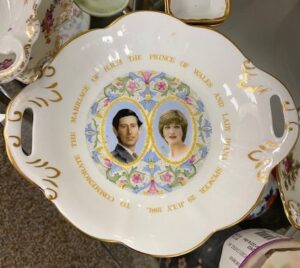
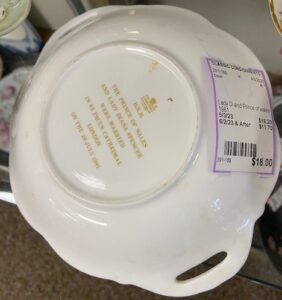
At the beginning of the 20th century, the future Edward VIII was hailed the most popular and charming Prince of Wales ever. His love for an American, Wallis Simpson of Baltimore, his abdication, and their life as the Duke and Duchess of Windsor long fascinated the world. Copies of his abdication speech are now collectible ephemera.
Events and activities of the Duke of Windsor’s brother, George VI and his daughter, Queen Elizabeth II, can be documented through the china, cookie tins, and various souvenirs created celebrating special occasions.
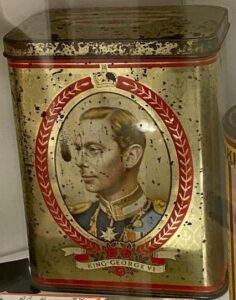
British Royal Giveaways Now Collectibles
Collectibles related to royalty fall into two basic categories: personal/ historical and mass merchandise.
For centuries nobility would bestow personal items upon favored courtiers. Gifts of clothing were common, as fine fabrics, embroidery, and lace were prized possessions. Queen Elizabeth I’s wardrobe and gifts and losses are documented in Janet Arnold’s books Queen Elizabeth’s Wardrobe Unlocked and Lost from Her Majesty’s Back.
James II gave his 1683 wedding suit to a couple who aided him before he became King. In 1992 it was offered at Christie’s London with an estimate of over 200,000 British pounds. Passed at auction, it was later sold privately to a British museum.
Queen Victoria gave presents to favored individuals. One was a parasol commemorating her coronation in 1837. It turned up at an Antiques Roadshow appraisal day in the 1990’s and valued at $2,000 – $3,000.
Why so many British Royal collectibles and commemoratives
Mass marketed royal articles are usually made and purchased because of public interest and sentiment or dissatisfaction with Royal Family members. During the Georgian Period, disenchanted Englishmen showed their distaste by buying and circulating caricatures of royal and British upper class romantic and military misadventures. Such caricatures by Hogarth and Cruikshank are still famous and prized.
The reign of Queen Victoria saw the rise of the middle class with unprecedented disposable income. The British expressed their affection for their longtime Queen by buying decorative and ephemeral paper items associated with her reign and family. Traditionally, commemorative items have been created to celebrate Royal events: coronations, Jubilees, anniversaries, births, royal visits, and weddings. Queen Victoria and Queen Elizabeth II lived so long that they had several Jubilees each as well as other special events. All were celebrated with commemorative trinkets and china.

You can purchase and download these images of Queen Victoria and her family at my Etsy shop, GrandmothersTrunkUS.
Typical British Royal collectibles and memorabilia
Mugs, plates, and tins with official portraits are typical items. Commemorative china dates from the 1600’s and transfer printing of Royal likenesses from c. 1780. Commemorative pieces commonly have either a portrait or silhouette or royal symbols such as crowns, swords, scepters, and initials, plus a date. The earlier ones associated with George IV, circa 1820-1830 command prices in the hundreds to thousands of dollars. (George IV, formerly the Prince Regent when his father, George III was mentally incapacitated. He sometimes pops up in Regency romances and may be referred to as “Prinny.”)
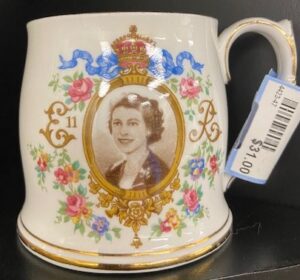
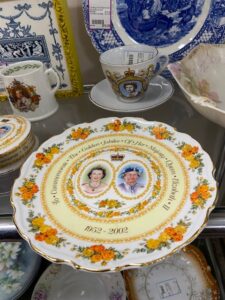
China from Queen Elizabeth II – on is common and at popular prices: a wide selection under $50. Many items have the Royal sanction and are sold in Royal castle gift shops. (When Charles and Diana divorced, the Queen ordered all Diana merchandise pulled from the shelves.)

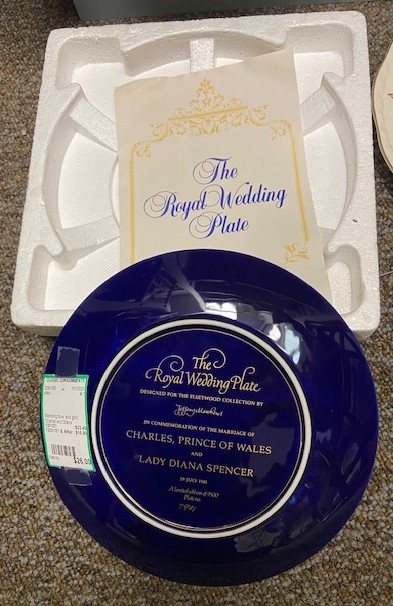
In recent generations dolls, stamps, videos, and books are commonly produced and eagerly purchased. You can amass a significant collection of Diana books and materials at reasonable prices. I’ve found a number of books and magazines in thrift and consignment shops. I found a kerchief commemorating Charles and Diana’s marriage at a rummage sale in Maine.
Popular magazines such as People often have photos and articles about the British Royals. You can quickly accumulate a collection of those, either buying new, or scouting library magazine swaps, like I do.
Most of the illustrations in this article are photos of items I’ve seen at my favorite consignment shop, Classic Consignments, in Sudbury, Mass.
Of course you can also do your hunting online on ebay and other virtual sales platforms.
A unique auction of British Royal collectibles and memorabilia added to the mania
In 1998 Sotheby’s, New York, auctioned off the estate of the Duke and Duchess of Windsor. Everything was special, limited, and personally connected to British Royalty. Many had true historic relevance and of museum quality. It took nine days to auction the 40,000 articles from the Windsor’s Paris mansion. The collection included photos, books, furniture, clothing, and royal family treasures documenting the life of the abdicated King Edward VIII.
The Duke was allowed to take historical family items following his abdication. He had the George III “Abdication Desk” on which he signed away the throne, a banner that belonged to his grandfather, Edward VII, and the red leather dispatch box stamped “The King” used to deliver state papers during the brief time he was Edward VIII. He also helped himself to a number of royal heirlooms, portraits, and personally inscribed historic photographs.
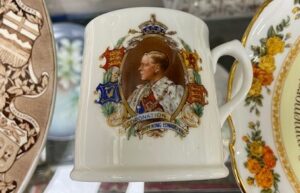

The Duke of Windsor also owned pieces of commemorative china passed down from Royal ancestors, as well as those of his own likeness before he abdicated. There were 10,000 photographs of the Royal Family from 1860s onward. Their wedding album with photos by Cecil Beaton, a piece of wedding cake, love letters and private letters, and their stylish clothing were all auctioned. Even their pugs’ silver-plated bowls were sold.
Before the auction, the collection was recorded on film and in an archive. It was also documented in the book The Private World of the Duke and Duchess of Windsor.
The catalog of the auction is also a record, as well as collectible. I cherish my copy that Sotheby’s sent me as I was a journalist writing about auctions, particularly those involving vintage clothing.
A mania for British Royal fashion collectibles
What British Royals wear, as well as what they do, is also an intense subject of interest. An area that the British Royal Family consistently influences is fashion. Queen Victoria made white gowns, lace veils, and orange blossoms for brides fashionable. Her son, Prince Albert, later King Edward VII, was a fashion trendsetter as well. Among other things, he made leaving the bottom button of a vest unbuttoned fashionable. Victoria’s great-grandson, The Duke of Windsor, popularized Fair Isle sweaters, plus fours, looser suits, and the Windsor Knot. He also designed jewelry for his Duchess. While much of the Windsor’s wardrobes went to museums, several items were auctioned and purchased by major fashion houses and designers. Gowns owned by Diana that have been auctioned have raised hundreds of thousands of dollars for charity.
Feeding a mania for British Royal memorabilia and collectibles
Collectors can choose several approaches to building a collection: by person, special occasion, material, or form. Quality ranges from tacky to upscale. I’ve found thrift and consignment stores to be good in-person hunting grounds for reasonably priced items. If you like reading about the Royals, libraries are great for free reading and book sales, as well as magazine swaps. You can find books devoted to British Royal memorabilia in libraries and online.
Just as “There will always be an England,” there will always be collectors of Royal memorabilia. In spite of over two hundred years of independence, the British Royal family still holds sway over the minds, hearts, and wallets of Americans. The family itself may be faltering, but its influence in the collecting marketplace is still strong. The Royal Outcasts: Diana, the Princess of Wales, the Windsors, and more recently, Harry and Meghan, Duke and Duchess of Essex, have seen to that.
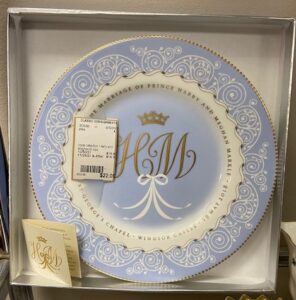
Please note: I found many of the British Royal commemoratives pictured in this post over a span of 2-4 years at Classic Consignments in Sudbury, Mass. They often, but not always, have some item related to British Royalty in stock.
Do you collect British Royal memorabilia? What and where have you found your more interesting pieces? Please comment below.
See also my post about collectible comic books.
Want to learn how to start a blog?
Here’s some courses to get you started: Start A Travel Blog
Want or need help with your blog or website? I’ve found inexpensive help on Fiverr.
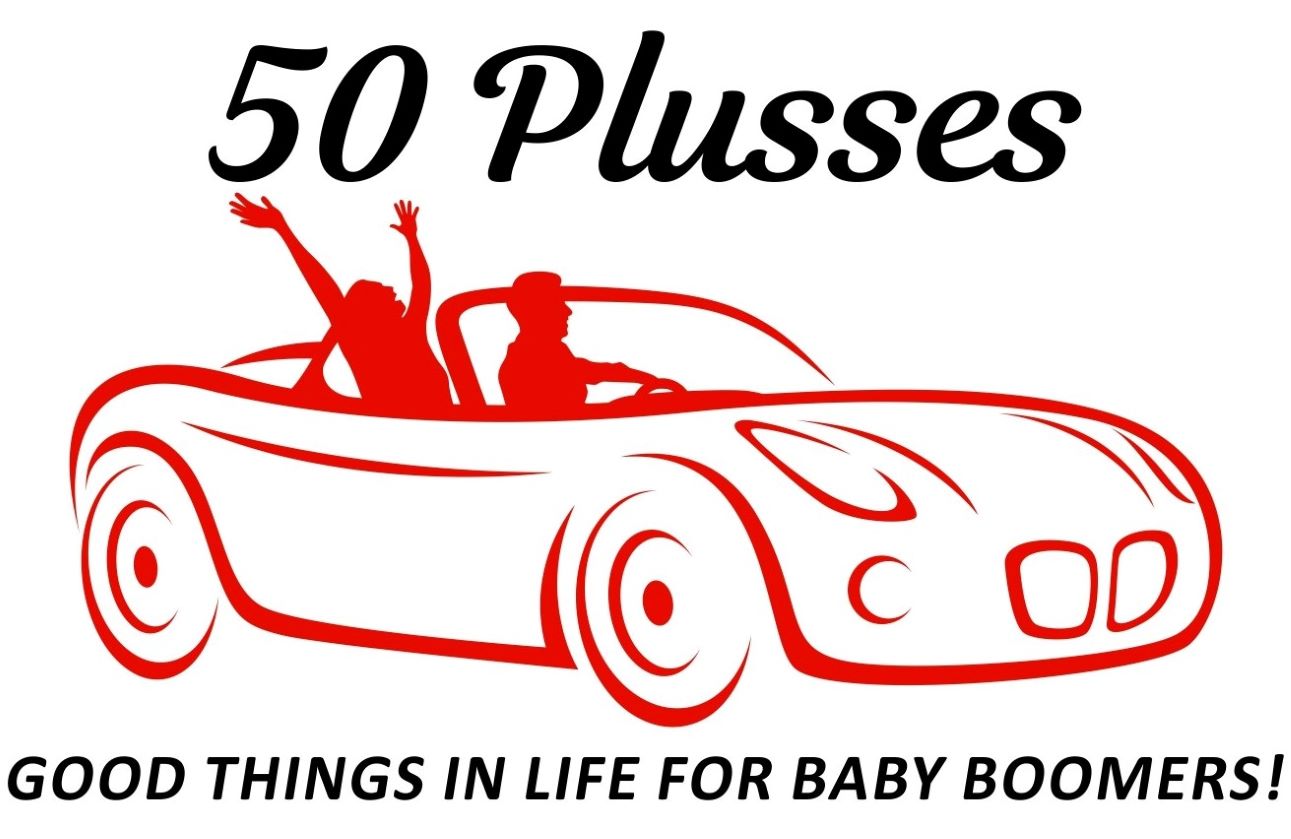
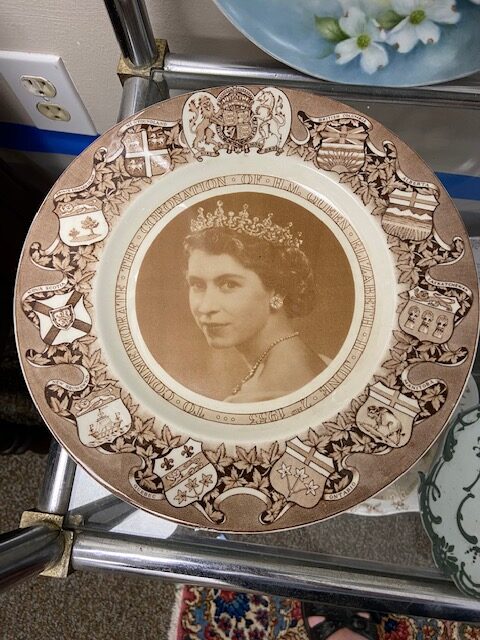
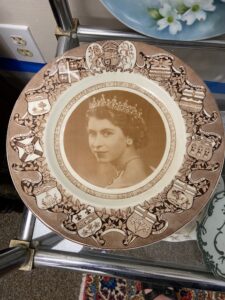 The Mania for British Royal Family Memorabilia
The Mania for British Royal Family Memorabilia